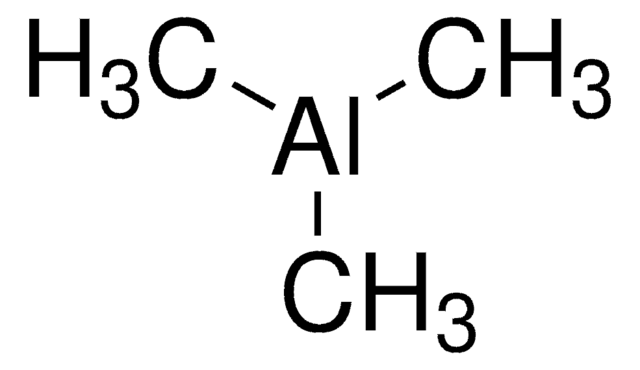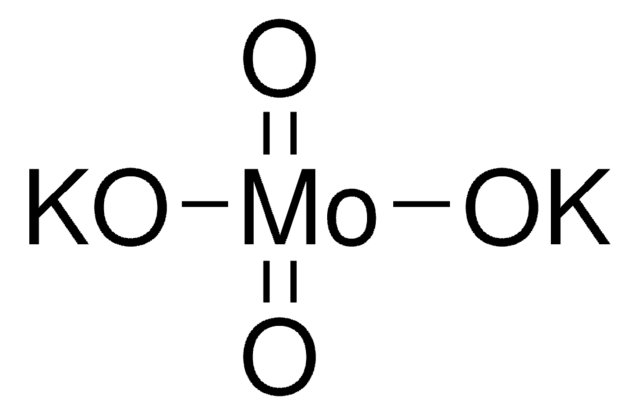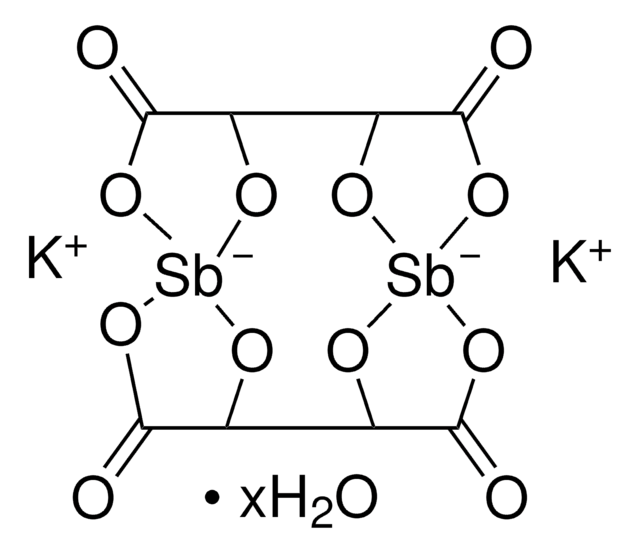277908
Ammonium molybdate
99.98% trace metals basis
Sinónimos:
Ammonium orthomolybdate, Diammonium molybdate
About This Item
Productos recomendados
grado
for analytical purposes
Nivel de calidad
Ensayo
99.98% trace metals basis
Formulario
solid
idoneidad de la reacción
reagent type: catalyst
core: molybdenum
técnicas
electron microscopy: suitable
impurezas
≤250.0 ppm Trace Metal Analysis
solubilidad
ethanol: insoluble(lit.)
cadena SMILES
N.N.O[Mo](O)(=O)=O
InChI
1S/Mo.2H3N.2H2O.2O/h;2*1H3;2*1H2;;/q+2;;;;;;/p-2
Clave InChI
LZRXBDCICLHKEN-UHFFFAOYSA-L
¿Está buscando productos similares? Visita Guía de comparación de productos
Categorías relacionadas
Descripción general
Aplicación
Palabra de señalización
Warning
Frases de peligro
Consejos de prudencia
Clasificaciones de peligro
Acute Tox. 4 Oral
Código de clase de almacenamiento
13 - Non Combustible Solids
Clase de riesgo para el agua (WGK)
WGK 1
Punto de inflamabilidad (°F)
Not applicable
Punto de inflamabilidad (°C)
Not applicable
Equipo de protección personal
dust mask type N95 (US), Eyeshields, Gloves
Elija entre una de las versiones más recientes:
¿Ya tiene este producto?
Encuentre la documentación para los productos que ha comprado recientemente en la Biblioteca de documentos.
Los clientes también vieron
Global Trade Item Number
| Número de referencia del producto (SKU) | GTIN |
|---|---|
| 277908-1KG | 4061833366080 |
| 277908-20G | 4061826202197 |
| 277908-100G | 4061826202180 |
| 277908-1G | |
| 277908-5G | 4061835561964 |
Nuestro equipo de científicos tiene experiencia en todas las áreas de investigación: Ciencias de la vida, Ciencia de los materiales, Síntesis química, Cromatografía, Analítica y muchas otras.
Póngase en contacto con el Servicio técnico








